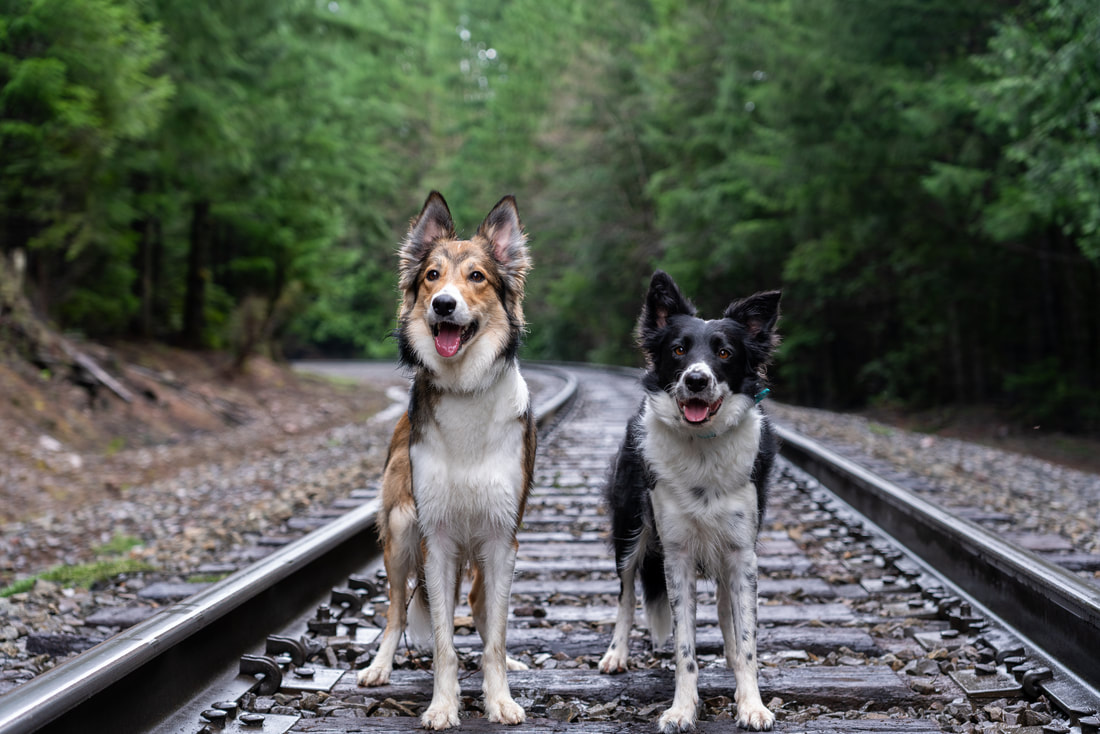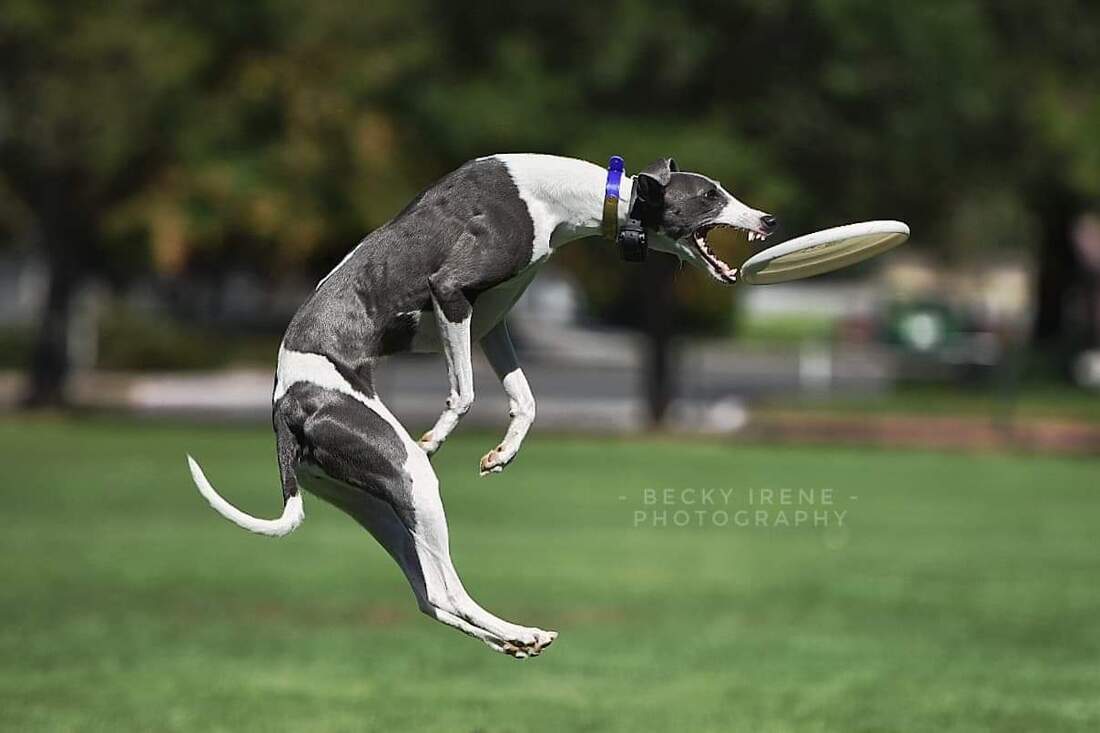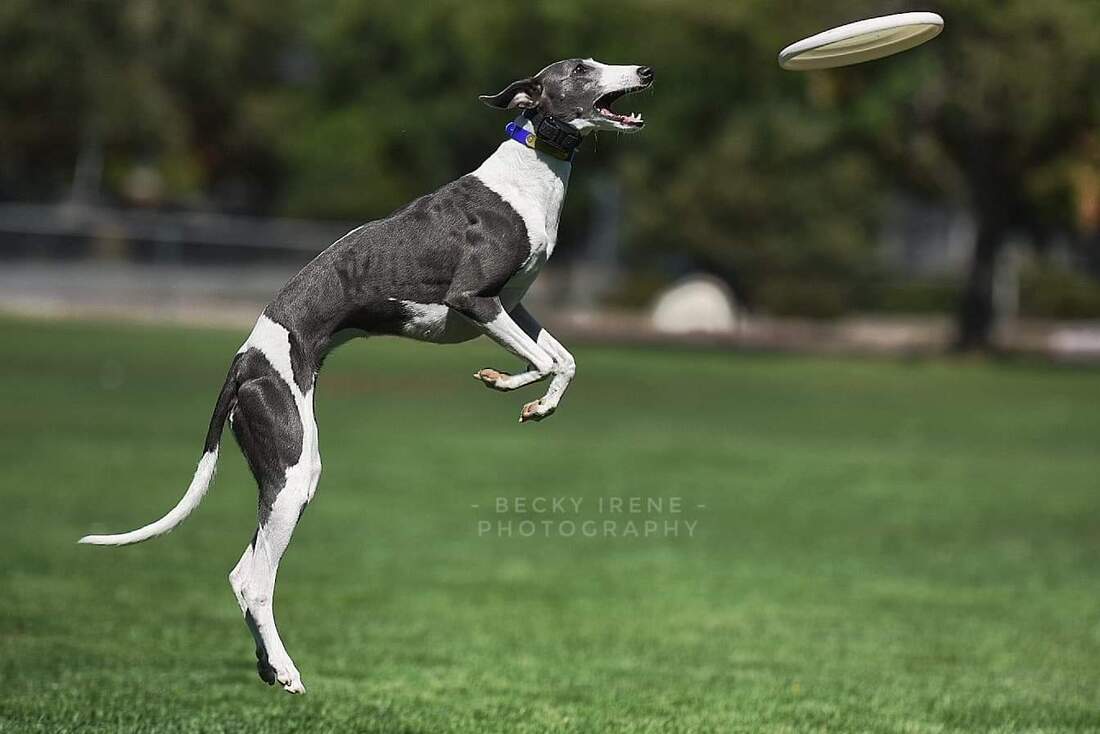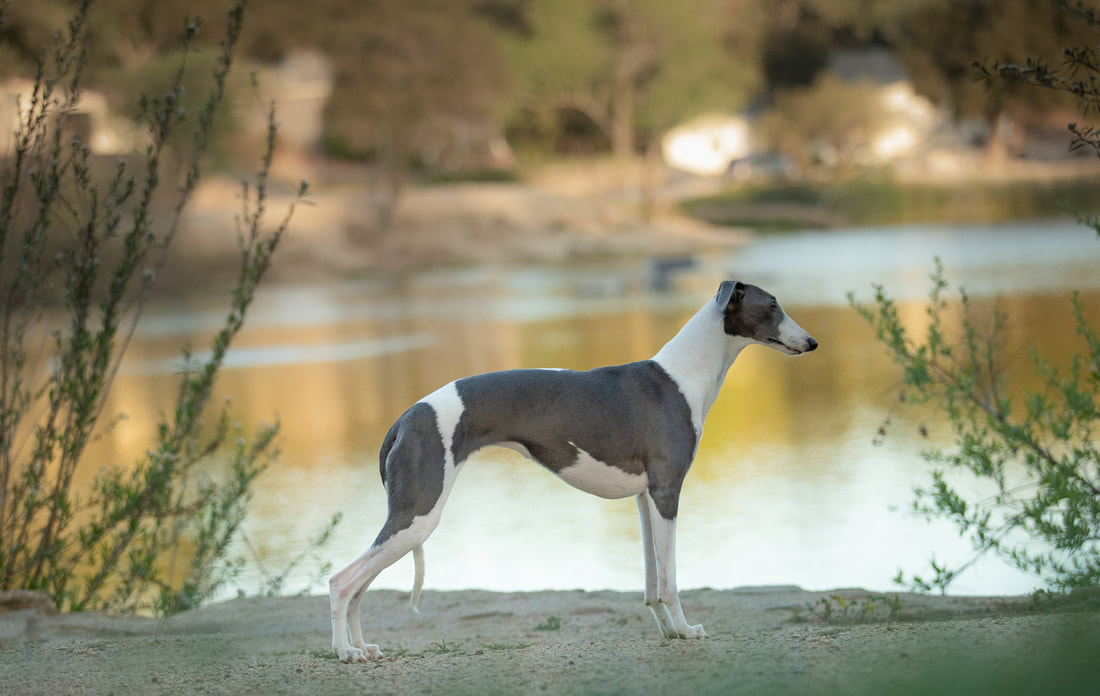Our current wait time estimate for pups can be 1 to 2+ years.
The website is currently under construction, so please bear with us as we make changes and improvements.
I think the perfect dog is one who is ready to go when you are–if that's a weekend backpacking trip, herding on the farm, agility/obedience/freestyle and other dog sports, but is also a dog who can chill all day and have slow weeks (or even slow seasons!) and not become over-aroused or under-stimulated too easily. Of course, Border Collies, Border Collie mixes, and other working/sport dogs are super intelligent dogs who should always have mental stimulation and thrive on training more than some breeds. But at a certain point, it can become a nuisance if your dog is nagging you all day, every day.
|
To quote the Border Collie temperament standard;
"The Border Collie is energetic, intelligent, keen, alert, and responsive. An intense worker of great tractability, it is affectionate towards friends but may be sensibly reserved towards strangers. When approached, the Border Collie should stand its ground. It should be alert and interested, never showing shyness, fear, dullness or resentment." |
Border Collies are a unique breed, not just because of their intelligence, amazing work ethic, and biddability but also because of their community of people and breeders. There are a wide variety of people with a huge array of opinions on what they think the Border Collie should be. And therefore, there are a lot of very different Border Collies and types within the breed! It can be confusing to sift through and figure out what type of dog best fits your needs and goals with the politics, lack of transparency, and back and forth that goes on within the breed community.
From my experience and understanding of the breed, there are roughly 4 broader “classes'' of Border Collies in the United States. Working lines, sporting lines, conformation lines, and lines bred without a specific purpose.
Working lines can go back to the foundation members and original intention of the breed, which was to work. “With work came the calm dog with its adrenaline channeled into its abilities” –Sue Main. To be the ideal farm hand, the quiet collected herder who makes his handler’s life easier. These working line dogs were not designed to leave their property often and if they did, it was likely to go to another farm. They weren’t designed to live in busy cities, to go to dog parks, to meet and greet with every person. They were designed to be their handlers right hand, a partner and teammate with loyalty and devotion unmatched. A capable and biddable dog who can think under pressure and make fast decisions, who will listen even at great distance, who can influence many animals of a much larger size than itself without causing a wreck or losing its confidence. These types of Border Collies are often very sound in temperament (and I say that with a lot of experience with dogs)! However, these breeders can put health on the back burner and sometimes will simply not health test their dogs at all, which can be concerning to some. They may also not be raised with the best (or any) puppy rearing or socialization practices. Dogs from these programs may not be the most versatile, and may take more effort to adjust to life beyond the farm. They need appropriate outlets for their drive and firm but fair handling.
In the sporting lines, for example agility or flyball focused breeding programs, the dogs often don’t have a natural off switch and can be prone to destructive behaviors, OCD tendencies, over the top arousal, excess reactivity, and a lack of self preservation as a few examples. That may make a world class flyball dog but does not always make for the best living companion.
In the conformation/show lines, there are commonly issues with temperament as breeders often evaluate the appearance and structure of the dog and prioritize that above other factors. They can be lacking in drive and biddability, struggle with displaced herding behaviors like shadow/reflection/light chasing, car chasing and motion reactivity, and I’ve commonly seen fur-chewing behaviors in the dogs going back to conformation lineage. Paradoxically, they can be far from the breed standard (which calls for moderation in all aspects), often being very overdone or exaggerated in body and coat–directly conflicting with their ability to work for duration in varied climates. They are very cute and are ideally an “easier” and equally versatile Border Collie compared to other lines, but it doesn’t always turn out that way.
Lastly, there are many Border Collies and sport dogs/sport mixes who come from kennels who are breeding without a specific intended purpose. Often, they can be referred to as “backyard breeders” who are not working to better the breed or breed ethically. This can be challenging to identify especially as a newcomer to the breeding world. Health testing should be the bare minimum, not the primary sign of an ethical or intentional breeder.
Working lines can go back to the foundation members and original intention of the breed, which was to work. “With work came the calm dog with its adrenaline channeled into its abilities” –Sue Main. To be the ideal farm hand, the quiet collected herder who makes his handler’s life easier. These working line dogs were not designed to leave their property often and if they did, it was likely to go to another farm. They weren’t designed to live in busy cities, to go to dog parks, to meet and greet with every person. They were designed to be their handlers right hand, a partner and teammate with loyalty and devotion unmatched. A capable and biddable dog who can think under pressure and make fast decisions, who will listen even at great distance, who can influence many animals of a much larger size than itself without causing a wreck or losing its confidence. These types of Border Collies are often very sound in temperament (and I say that with a lot of experience with dogs)! However, these breeders can put health on the back burner and sometimes will simply not health test their dogs at all, which can be concerning to some. They may also not be raised with the best (or any) puppy rearing or socialization practices. Dogs from these programs may not be the most versatile, and may take more effort to adjust to life beyond the farm. They need appropriate outlets for their drive and firm but fair handling.
In the sporting lines, for example agility or flyball focused breeding programs, the dogs often don’t have a natural off switch and can be prone to destructive behaviors, OCD tendencies, over the top arousal, excess reactivity, and a lack of self preservation as a few examples. That may make a world class flyball dog but does not always make for the best living companion.
In the conformation/show lines, there are commonly issues with temperament as breeders often evaluate the appearance and structure of the dog and prioritize that above other factors. They can be lacking in drive and biddability, struggle with displaced herding behaviors like shadow/reflection/light chasing, car chasing and motion reactivity, and I’ve commonly seen fur-chewing behaviors in the dogs going back to conformation lineage. Paradoxically, they can be far from the breed standard (which calls for moderation in all aspects), often being very overdone or exaggerated in body and coat–directly conflicting with their ability to work for duration in varied climates. They are very cute and are ideally an “easier” and equally versatile Border Collie compared to other lines, but it doesn’t always turn out that way.
Lastly, there are many Border Collies and sport dogs/sport mixes who come from kennels who are breeding without a specific intended purpose. Often, they can be referred to as “backyard breeders” who are not working to better the breed or breed ethically. This can be challenging to identify especially as a newcomer to the breeding world. Health testing should be the bare minimum, not the primary sign of an ethical or intentional breeder.
In my opinion, some green flags in breeders are:
- A breeder who is very forthcoming about their program and goals.
- If they have social media, they share videos of their adult/breeding dogs out in the world and around the house. Ideally you would be able to easily get to know their dogs and get a picture of what they are striving to produce and what puppies will be like as adults.
- They post or are willing to share videos of litters of puppies being enriched, trained, and the areas they are being raised in, and have detailed information on their milestones and individuality.
- Puppies are raised with Puppy Culture, Avidog or similar rearing methods.
- Their website (or relevant breeding page) contains easily accessible details about their dogs, including what parents produced which puppies, and easily accessible health testing and pedigree information. Or if they don't have a website/page, this information is clearly communicated and willingly shared.
- They are able to provide and communicate their intentions regarding the purpose of certain pairings and what types of homes puppies may be best suited for.
- They demonstrate a strong understanding of the behavior and history of their breed.
- Before any homes are approved, they have a thorough screening process for puppy applicants.
- They require contracts for their puppies and will take back any dogs they have produced at any time for any reason. The dogs they bring into the world always have a home with them.
- Breeders who have/are active on social media but don’t post much of their own dogs or litters of puppies, particularly if they aren’t posting videos.
- When breeders always have puppies on the ground, never take a break from having litters, have multiple litters at once regularly. Raising litters the right way is taxing! It takes a lot of time and effort.
- A breeder who breeds very young dogs, especially if they are bred before their health testing is officially complete.
- Breeders who announce their litters by listing every possible color outcome from that pairing and who price puppies differently based on their color or sex.
- A breeder who allows people to choose their puppies themselves, especially on a first-come first-served basis.
- A breeder who matches homes while the puppies are still young and their temperaments cannot be predicted.
- A breeder who approves you without extensive screening.
- A breeder who is not familiar with behavioral dispositions and possible issues commonly associated with their breed.
|
Historically, Border Collies were meant to be “on,” to be managing large flocks of sheep, to be working in complex, challenging, and dynamic environments. To completely ignore all of those things when they’re told “that’ll do” and the job is done. Taking that caliber of dog and expecting it to be flawless in our human society is not appreciating the breed in its most true form. Border Collies should not be the go-to for people wanting a dog that will not require them to increase their level of education.
|
|
I prefer the genetics and temperament of working lines and some sporting lines. Temperament is among the most important considerations in my program, and I am very careful with the pairings I choose. I know my dog’s faults and the things I would like to improve on in future generations! I am active and intentional in my breedings, and my goal is to create well-rounded puppies that can excel at herding, sports and training, who are also good pets. Because at the end of the day, that's what they all are! Our companions.
Finding a Border Collie breeder whose goals and ideals are congruent with your own is what is most important. Border Collies have become such a popular breed and many people want to breed them... but without necessarily holding themselves accountable for, not only the dogs they produce, but also their puppy buyers' success and long-term happiness with their dog. What it all boils down to at the end of the day is finding a breeder whose program aligns with the things that you value and are looking to find in your dog. |
So, where do Whippets come into the picture?
|
I think it's pretty unlikely I would have branched out from Border Collies for my personal dogs, so we have my partner to thank for this one!
As a dog trainer who owns Border Collies, you can experience some trivialization on your training abilities, because "Well, it's a Border Collie, so of course it can." Smartest dog breed and all that! While this has always been a little nagging sensation and not much else, we decided to make the leap and showcase our training abilities with a dog not known for biddability. I had always had an admiration for sighthounds and when researching what breeds of dog were known for being hard to train, many of them are listed! We picked out which one seemed to fit our lifestyle and goals best, which was the Whippet. The breeder we did end up finding had lovely dogs and was very small scale. They did not do any sort of puppy rearing protocols. This was reflected in some issues we had to overcome with our girl Lapis, including difficulties with potty training, crate training, and mild separation anxiety as a puppy. But beyond those challenges, we really fell in love with the breed and with sighthounds in general!
|
The next hurdle we had to overcome was how difficult it was to find a Whippet breeder who would take the time to speak to us about their program and consider us for one of their puppies. Because we didn't have Whippet experience, this was a struggle! We were turned down and discouraged by several breeders before we finally found one who would sell us a puppy.
My partner dove into the running dog and sighthound community and we both learned so much. Whippets are a notoriously healthy breed and very structurally sound. Unlike Border Collies, they rarely have temperament or behavioral issues aside from what could be called a lack of trainability and high prey drive. However, I feel that the training challenges have more to do with how people keep them and what their expectations for the dogs are.
|
Whippets make excellent pets, family dogs, sport dogs, hunting dogs, and overall are a really versatile and great breed!
|
Of course, when getting into the running dog community, you see a lot of Lurchers (sighthound mixes) created for many different jobs. Lurcher is an old English term for a cross-bred dog, specifically the result of mating a sighthound with a dog of another type, typically a working breed. The term 'lurcher' was first used with this meaning in 1668, although Lurchers can be easily found to date back to the 1300s. They are not a "new fad" or "designer mix."
While Whippets were bred to hunt rabbits, Lurchers are often bred for hunting coyotes, deer, and even boar. There are also many lines of lurchers bred for sports like flyball, dock diving, and agility. |
One very common Lurcher is the Border Whippet, a cross between a Border Collie and a Whippet. There are a lot of advantageous reasons to cross these two breeds, including a relatively similar size and stature, but also details that compliment each other really well, like the overall health of the Whippet. As we know, Border Collies as a whole are not the healthiest dog breed and can suffer from many different ailments and diseases. And the extreme biddability and work ethic of the Border Collie can add some different drives and "listening ears" to the Whippet. Among many other things! I could go on and on.
|
Our eldest Whippet, Lapis, has turned out very well, both physically and mentally, and we are eager to see what she can offer the program.
What we want to achieve by breeding Whippets is to get this amazing breed into more people's homes and hearts and to welcome newcomers to the breed. We actually want to prioritize homes who have not yet owned a Whippet and help change what people think of them (that they are hard to train, can't be off leash, are fragile, etc). We also are very eager to put our puppy raising start on them! To see some little Whippets who have been raised to be enrichment seekers, to have training relationships with humans. To really give them that special start and the lifetime support which we include with every dog we raise or train.
What we want to achieve by breeding Whippets is to get this amazing breed into more people's homes and hearts and to welcome newcomers to the breed. We actually want to prioritize homes who have not yet owned a Whippet and help change what people think of them (that they are hard to train, can't be off leash, are fragile, etc). We also are very eager to put our puppy raising start on them! To see some little Whippets who have been raised to be enrichment seekers, to have training relationships with humans. To really give them that special start and the lifetime support which we include with every dog we raise or train.
Purpose bred mixes
I have always deeply admired purpose bred mixed breed dogs. I am of the mind that mixing breeds with thoughtfulness and intention does not "take away" from their purebred ancestors or do their heritage any disservice but rather adds versatility and furthers potential. There are mixed breed dogs for many different purposes; there are many successful mixes being bred for service work, guide dogs, military work, personal protection, hunting, herding, livestock guarding, sports like disc, agility, flyball, etc as well as mixes for just companionship.
My personal criteria for purpose bred mixes are that;
I plan on producing intentional mixes within the next few years. The mixes I am most interested in are BorderWhippets and BorderPaps.
I also have some interest in American Pit Bull Terrier inclusive mixes, like BullWhippets and Bullherders but those are unlikely anytime soon. These mixes may be produced within my own kennel or with outside collaborations. These would be future endeavors and I have no current plans for producing any mixes beyond BorderPaps and BorderWhippets.
My personal criteria for purpose bred mixes are that;
- The dogs being bred are fully health tested to each breeds requirement and when entering multigenerational mixes that the individuals are tested for every breed in their make ups requirements.
- The dogs are good examples of what their mix is being produced for and have reason to believe they will pass on desirable traits.
- The dogs are stable minded and suitable for breeding - purebred or mixed.
- The dogs have functional structure for their intended purpose.
I plan on producing intentional mixes within the next few years. The mixes I am most interested in are BorderWhippets and BorderPaps.
I also have some interest in American Pit Bull Terrier inclusive mixes, like BullWhippets and Bullherders but those are unlikely anytime soon. These mixes may be produced within my own kennel or with outside collaborations. These would be future endeavors and I have no current plans for producing any mixes beyond BorderPaps and BorderWhippets.
Little dogs making big waves
BorderPaps are taking the agility world by storm! This is relatively new mix, the first of them beginning around 10-15 years ago but their popularity has been on a slow rise until fairly recently, when it has been rapidly increasing due to people seeing BorderPaps excelling in the sport world, namely agility but they are showing a lot of success in other sports as well.
BorderPaps are a purpose bred cross between a Border Collie and a Papillon, resulting in a small yet robust sport dog with a lot of drive and aptitude for training. Many people are interested in them simply because they think they will be just like a little Border Collie, which is not always the case and shouldn't be your only hope going in. Their Papillon ancestry also plays a role and Papillon-like temperaments and behaviors should also be expected and prepared for. Papillons are the smallest of the Spaniels and the breed dates back to Renaissance times and have been affectionately featured in portraits of long-ago royalty painted by Europe's most renowned artists. The Papillon is a beautiful breed with lots of enthusiasm, athleticism, and versatility. Despite being a toy breed, they are known to be quite hardy and can adapt to many different lifestyles. They are well loved in the dog sport community for their drive, trainability and fun personalities. They are excellent agility dogs and are consistent winners at the sport's highest levels.
As most people are well aware, Border Collies are of the highest performing breeds in almost every dog sport. Paps are known to be "the Border Collie of the little dogs" and are highly successful in dog sports. In crossing Border Collies and Papillons, good breeders are looking to achieve a small-but-not-toy dog who is built for the sport world. They should be friendly, outgoing, adaptable and versatile, and highly trainable with an eagerness to learn. The parent breeds both compliment each other physically and we are seeing a lot of consistency even in first generation crosses.
I have been looking towards and making plans to breed this wonderful mix for many years and I'm glad the time is now because due to their increasing popularity, we are already seeing and will be seeing even more of a spike in unscrupulous breeders "hopping on the bandwagon" and breeding these special dogs for the wrong reasons. It is very important that puppy buyers are holding mixed breeders to the same standards you would want to see from any other good breeder. Health testing to each parent breeds standard, proper puppy raising, thoughtful placements, ethical and responsible ownership of the parents, etc. and in the multigenerational mixes (i.e. BorderPap x BorderPap, BorderPap x Border Collie, BorderPap x Papillon) the parents need to be tested for all of the health requirements for each breed in their makeup.
If you have any questions, concerns, or would like some support or help in finding a good BorderPap breeder, please don't hesitate to reach out! I am always happy to help.
BorderPaps are a purpose bred cross between a Border Collie and a Papillon, resulting in a small yet robust sport dog with a lot of drive and aptitude for training. Many people are interested in them simply because they think they will be just like a little Border Collie, which is not always the case and shouldn't be your only hope going in. Their Papillon ancestry also plays a role and Papillon-like temperaments and behaviors should also be expected and prepared for. Papillons are the smallest of the Spaniels and the breed dates back to Renaissance times and have been affectionately featured in portraits of long-ago royalty painted by Europe's most renowned artists. The Papillon is a beautiful breed with lots of enthusiasm, athleticism, and versatility. Despite being a toy breed, they are known to be quite hardy and can adapt to many different lifestyles. They are well loved in the dog sport community for their drive, trainability and fun personalities. They are excellent agility dogs and are consistent winners at the sport's highest levels.
As most people are well aware, Border Collies are of the highest performing breeds in almost every dog sport. Paps are known to be "the Border Collie of the little dogs" and are highly successful in dog sports. In crossing Border Collies and Papillons, good breeders are looking to achieve a small-but-not-toy dog who is built for the sport world. They should be friendly, outgoing, adaptable and versatile, and highly trainable with an eagerness to learn. The parent breeds both compliment each other physically and we are seeing a lot of consistency even in first generation crosses.
I have been looking towards and making plans to breed this wonderful mix for many years and I'm glad the time is now because due to their increasing popularity, we are already seeing and will be seeing even more of a spike in unscrupulous breeders "hopping on the bandwagon" and breeding these special dogs for the wrong reasons. It is very important that puppy buyers are holding mixed breeders to the same standards you would want to see from any other good breeder. Health testing to each parent breeds standard, proper puppy raising, thoughtful placements, ethical and responsible ownership of the parents, etc. and in the multigenerational mixes (i.e. BorderPap x BorderPap, BorderPap x Border Collie, BorderPap x Papillon) the parents need to be tested for all of the health requirements for each breed in their makeup.
If you have any questions, concerns, or would like some support or help in finding a good BorderPap breeder, please don't hesitate to reach out! I am always happy to help.











